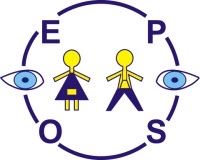|
Research Grant (Max. 10'000 €)
Awarded once per year, provided sufficient funds are available
Aim
- To promote research in paediatric ophthalmology and support young researchers in this field.
Eligibility
- < 35 years old (defined as <35 years at midnight of the deadline for abstract submissions for the annual congress)
- A candidate who has not been awarded this grant before
- EPOS member and attends the annual meeting
Criteria
- Scientific excellence of the submitted project
- Novelty, potential clinical value and significance of the project in the field of paediatric ophthalmology
- Strength of motivation and Curriculum Vitae of the applicant
Adjudication Evaluation and Process
Evaluated by EPOS Board Members
1. Application:
Full research application including CV, publication list, and support letter. To be sent to the EPOS board not later than 2 weeks prior to the annual meeting.2. Evaluation
At the EPOS board meeting prior to the annual meeting.
3. Announcement
At the end of the annual meeting.
4. Presentation
The researcher must present a progress report at the annual meeting in the following year, and the final report in the following 1-2 years.
Awardees
The 47th annual meeting of EPOS in Munich, Germany, 8-9th October, 2022Awarded to:
Dr. Seliniotaki successfully finished and published the study for her PhD Thesis. Efficacy and Safety of Mydriatic Microdrops for Retinopathy of Prematurity Screening: The MyMiROPS Randomized Clinical Trial Seliniotaki AK et al. JAMA Ophthalmol. 2025 Feb 1;143(2):110-116. doi: 10.1001/jamaophthalmol.2024.5462. Abstract: Importance: Commercial mydriatics administered in preterm infants during retinopathy of prematurity (ROP) screening have been associated with various cardiorespiratory and gastrointestinal adverse events. Objective: To examine whether microdrops of a combined mixture of 1.67% phenylephrine and 0.33% tropicamide are noninferior to standard drops regarding mydriatic efficacy at 45, 90, and 120 minutes. The occurrence of systemic adverse events and systemic absorption of phenylephrine eyedrops were additional secondary outcomes. Design, setting, and participants: This randomized clinical trial with a double-masked, noninferiority, crossover design included infants undergoing ROP screening at a tertiary center in Northern Greece from September 2021 to January 2023. Eligible participants were infants with gestational age below 32 weeks and/or birthweight under 1501 g, or infants beyond these thresholds referred by an attending neonatologist due to comorbidities. Interventions: Either microdrops or standard drops of the diluted mixture were administered at a random allocation sequence with a 1-week washout period. Main outcomes and measures: The horizontal pupil diameter at 45, 90, and 120 minutes was measured using a customized ruler in 0.5-mm increments. Mixed-effects linear regression models were developed, and the confidence interval (CI) approach was used for assessing noninferiority. The predefined noninferiority margin was -0.4 mm. Heart rate; oxygen saturation; blood pressure measurements at 45, 90, and 120 minutes; 24-hour hypertensive episodes; and 48-hour systemic adverse events were assessed. Phenylephrine concentration in peripheral blood within 3 hours postinstillation was measured using hydrophilic liquid chromatography-tandem mass spectrometry. Pooled pharmacokinetic parameters were calculated based on a developed mathematical model. Results: A total of 83 infants were randomized (mean [SD] gestational age, 29.7 [2.0] weeks; mean [SD] birth weight, 1277 [374] g). Microdrops proved to be superior regarding mydriatic efficacy at 45 minutes (mean difference, 0.12; Bonferroni-corrected 95% CI, 0.01 to 0.23; P = .008) and noninferior at 90 minutes (Bonferroni-corrected 95% CI, -0.10 to 0.17) and 120 minutes (Bonferroni-corrected 95% CI, -0.18 to 0.14). Lower levels of oxygen saturation at 45 minutes (mean difference, 0.66; 95% CI, 0.09 to 1.24; P = .03) and 90 minutes (mean difference, 0.58; 95% CI, 0.03 to 1.14; P = .04) and higher percentage of 24-hour hypertensive episodes (median [IQR] percentage of hypertensive episodes: microdrops, 0.10% [0.02%-0.19%] vs standard drops, 0.14% [0.06%-0.40%]; P = .01) were observed after standard drops. A 1-compartment model with first-order absorption best described the pharmacokinetic data. Conclusion and relevance: To our knowledge, this is the first study establishing noninferiority of microdrops compared with standard drops of a diluted mydriatic mixture, showing reduced systemic adverse events after microdrops and determining the pharmacokinetic profile of phenylephrine eyedrops in preterm infants. |
The 43rd annual meeting of EPOS in Oxford, United Kingdom, August 31st-September 2nd, 2017
Awarded to:
- Stefan Langenegger, Switzerland
